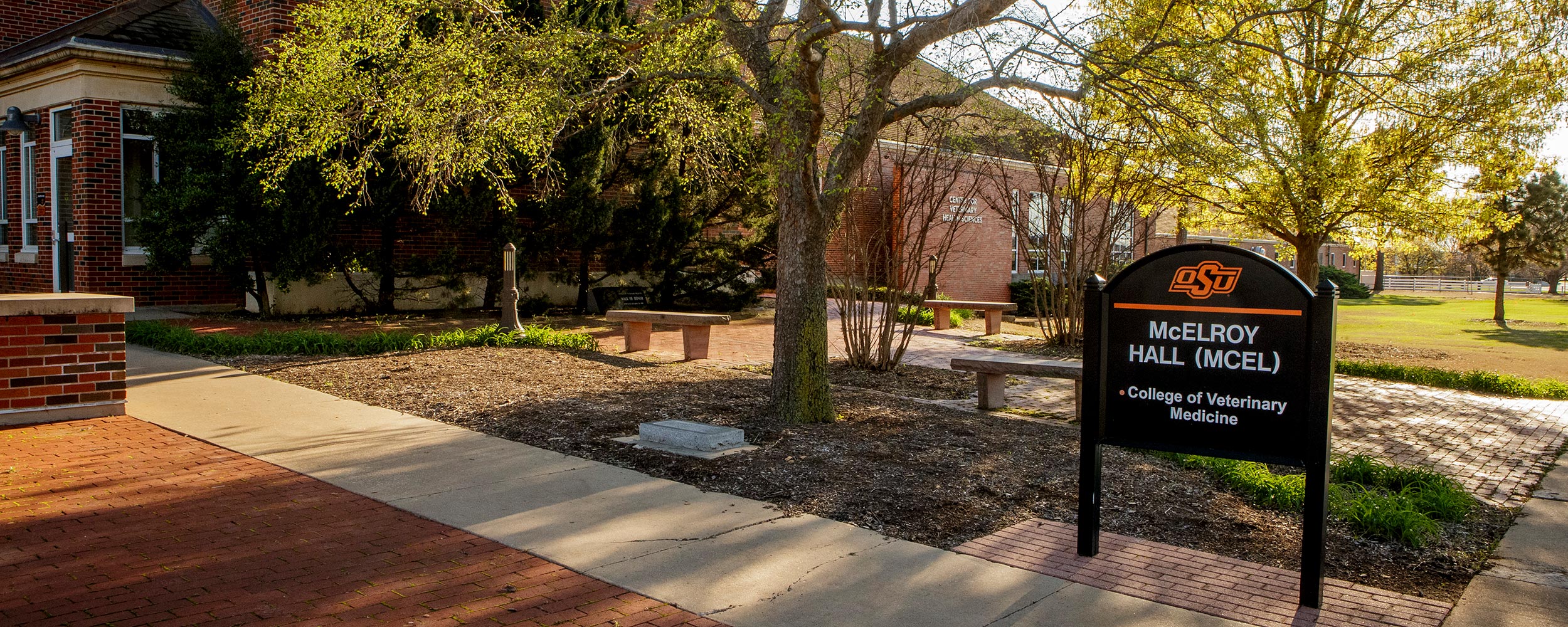
OSU veterinarian uses innovative approach to help rescue horse
Wednesday, November 19, 2014
Dr. Michael Schoonover, assistant professor of surgery at Oklahoma State University’s Center for Veterinary Health Sciences, couldn’t find any literature on fusing both the knee and the fetlock in the same limb on the same horse, but that didn’t stop him from performing the innovative procedure to help a rescue horse named Spirit.
“Everything we have done has been a little bit challenging and interesting,” Schoonover said. “The horse was abused and beaten with a baseball bat by his previous owner before he was rescued. Spirit had a significant angular limb deformity, so his foot really twisted inward underneath him and he couldn’t bear weight on the limb at all.”
Spirit, a therapy horse for abused children, is owned by Ranch Hands Rescue, a nonprofit group out of Texas. Earlier this year, the rescue organization contacted Schoonover about doing a procedure on the horse.
“When I originally saw the X-rays, I was very pessimistic and felt this may not be a good use of the rescue’s funds and not a great prognosis for the horse,” Schoonover said. “The manager of the Ranch Hands Rescue called me and explained the situation and gave me some examples of how this horse has really helped some of these kids who have been abused to open up and start their therapy process. Once I knew that, I was like, 'Man, we really need to try and save this horse because he does have a purpose.' His job is very important and we are trying to allow him to do that job for a lot more years.”
In February 2014, Schoonover performed a pancarpal arthrodesis on Spirit.
“What that means is we fused all the joints in his knee making it unbendable and straight," he said. "Postoperatively, he did well. However, once we took the initial cast off, we could tell he was having problems with his fetlock joint or his ankle joint being able to actually keep that joint in extension and bear weight on it.”
Schoonover tried managing Spirit’s challenge in several different ways with not much success, which led to the first double fusion on the same limb.
“This last surgery we did was an attempt to fuse the fetlock joint on the same leg as his fused knee joint. After speaking with veterinarians across the country, who do a lot of orthopedics, this is not something that is commonly done if at all,” Schoonover said.
“We are treating Spirit with a transfixation pin cast, which involves putting four stainless steel pins through his leg. He has two pins that go in his cannon bone, which is the bone above his ankle, and two pins that are in the long pastern bone, which is the bone right below his ankle. Those pins actually penetrate through the skin and are incorporated into the cast to make the joint rigid so that it can fuse on its own.
“We also removed all the cartilage in his fetlock joint so now we have made bone on bone. So, as long as we keep it rigid — and that’s what those pins are for — it should heal like a fracture would heal. Now that it’s been six weeks since his second surgery, we will remove the cast and one of the pins. We are going to stage the pin removal so that we take one pin out every four or five days so his bones will gradually adjust to bearing weight. Even when he goes home, we will keep him in a cast for another six weeks. After that, the bones should be strong enough to support his weight and we won’t have to worry about him having problems with that anymore.”
Ranch Hands Rescue paid for all the procedures that Schoonover and his team have performed. They accept donations and anyone wanting to help with Spirit’s care can donate at https://ranchhandsrescue.org/.
“Even though a knee fusion and fetlock fusion on the same limb have not been documented before, Spirit’s progress has been good,” Schoonover said. “Sometimes I can see in horses that they are just done and they want to give up, but this horse has never had that appearance. We have tried to do things that were not only in the best interest of the rescue group, but mainly were in the best interest of Spirit. His prognosis is fair to good. We have a very positive outlook on how far we’re going to be in another six months.”
Based on the success of Spirit’s double fusion, Schoonover plans to document the procedure in veterinary medical journals for others to benefit from his experience. Schoonover earned his DVM degree from OSU in 2000. He is a diplomate of the American College of Veterinary Surgeons and of the American College of Veterinary Sports Medicine and Rehabilitation. He joined the faculty at OSU’s Veterinary Medical Hospital in 2012 following eight years of private equine practice in central Oklahoma.
